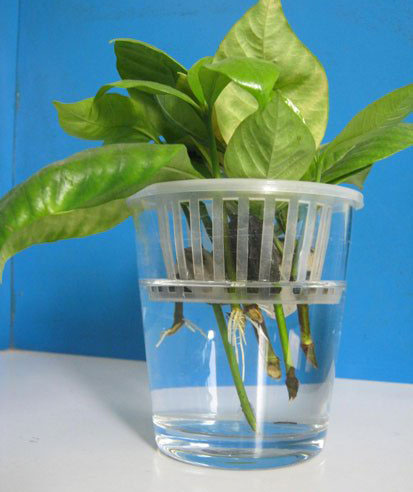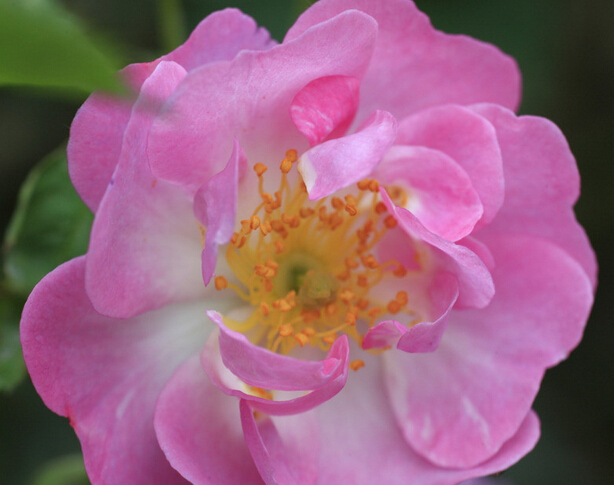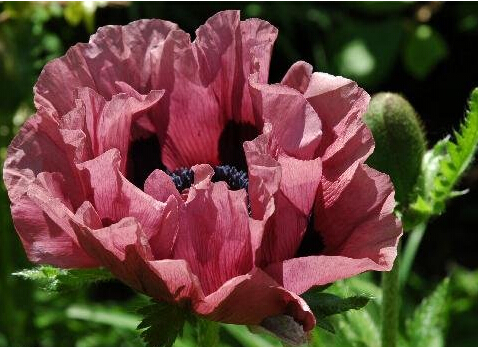Water Culture Cuttage method of Gardenia jasminoides
Water culture cutting of Gardenia jasminoides is a common method of gardenia propagation. This paper is the whole process of gardenia from the beginning of hydroponic cutting, "sprouting small roots" and "root growth". It is very worthy of reference for novice flower friends.
1. Start hydroponic cuttage
Intercept the branches properly and put them into hydroponic utensils, intercepting biennial branches, and now it is time for pruning (around August). Soak the cut branches in oily-free water (tap water or pure water) without adding anything, but in such a summer day, carefully observe the state of the water. If the water is a little muddy, change the water immediately and wait for the roots to sprout.
2. After sprouting small roots in about a week, you can see white spots on the branches in the water, that is, there are signs of rooting.
3. when the root system grows further, it feels like it has taken root, and only when the root grows to more than an inch long can it be put on the pot.

4. Be ready to go to the basin and prepare a smaller mud basin and raw soil (that is, the underlying soil of the garden soil), because such soil is free of insects and fungi. Then grind the soil into the basin, pay attention to the soil in the basin to form a "mushroom" shape, let the small root droop naturally, so as not to break the small root.
5. After potting, the rooting branches should be watered thoroughly, put them in a cool place for 3 days or 4 days, and then put them outside for maintenance.
6. for usual maintenance, after moving outside, you should often bask in the sun and wait for it to blossom. Note that the leaves of gardenia should be often watered with rust water to make them greener and more glossy; often irrigated with fermented Amoy rice water can promote gardenia to grow healthily, blossom more, have a long flowering period, and smell of flowers.
Step diagram of water culture cutting method of Gardenia jasminoides
Gardenia can be cut through water culture, now is the season of raising gardenia, try gardenia through water insertion, here are the steps and methods of water culture cutting of gardenia for you.
Water culture cutting method of Gardenia jasminoides 1. Water cutting material
Before the water is inserted, florists should prepare a bottle in advance (the practical thing here is to finish the Sprite bottle), foam board and scotch tape.
In addition, cut the Sprite bottle horizontally from the top with a knife, leave a little bit uncut, and treat the foam board to the size of a bottle.
2. Selection of cuttings
Then select the gardenia cuttings, generally select the gardenia twigs, and cut the lower end of the branches into an oblique mouth, the leaves above the branches can be retained, and then the branches will be fixed on the foam board.
3. Water insertion mode
After the above things are ready, flower friends can fill the bottle with the right amount of water, put the fixed gardenia foam board in the bottle, let the lower end of the branch soak in water, the water in the bottle can be a little more, you can no longer add water. Then seal the bottle with scotch tape and punch a toothpick-sized hole in the bottle cap.
4. Late maintenance
After the water is inserted, put the bottle in a place with light, the temperature can be higher, generally, the more water droplets on the bottle wall, the easier it is to take root. Then you don't have to worry about it anymore, you just have to wait for a surprise, usually the branches begin to take root in a week or so in summer, and gardenia flower friends can take action.
Water Culture Cuttage of Gardenia jasminoides
Water culture cutting of Gardenia jasminoides is a common method of gardenia propagation. This paper is the whole process of gardenia from the beginning of hydroponic cutting, "sprouting small roots" and "root growth". It is very worthy of reference for novice flower friends.
1. Start hydroponic cuttage
Intercept the branches properly and put them into hydroponic utensils, intercepting biennial branches, and now it is time for pruning (around August). Soak the cut branches in oily-free water (tap water or pure water) without adding anything, but in such a summer day, carefully observe the state of the water. If the water is a little muddy, change the water immediately and wait for the roots to sprout.
2. After sprouting small roots in about a week, you can see white spots on the branches in the water, that is, there are signs of rooting.
3. when the root system grows further, it feels like it has taken root, and only when the root grows to more than an inch long can it be put on the pot.
4. Be ready to go to the basin and prepare a smaller mud basin and raw soil (that is, the underlying soil of the garden soil), because such soil is free of insects and fungi. Then grind the soil into the basin, pay attention to the soil in the basin to form a "mushroom" shape, let the small root droop naturally, so as not to break the small root.
5. After potting, the rooting branches should be watered thoroughly, put them in a cool place for 3 days or 4 days, and then put them outside for maintenance.
6. for usual maintenance, after moving outside, you should often bask in the sun and wait for it to blossom. Note that the leaves of gardenia should be often watered with rust water to make them greener and more glossy; often irrigated with fermented Amoy rice water can promote gardenia to grow healthily, blossom more, have a long flowering period, and smell of flowers.
The above are just personal opinions and are for reference only. And wish you success in cutting!
- Prev

Culture methods of rose flowers: characteristics and growth habits of rose flowers
Morphological features: rose is a small flower with vine climbing fence, many cultivated flowers are fragrant and beautiful, often white, yellow, orange, pink or red; wild roses are solitary or in small clusters; petals are usually 5, cultivated species are often double, rose blossoms from May to September, blooming for half a year
- Next

Introduction to the varieties of Yu Mei
There are many varieties of Yu beauty, such as complex color, intermediate color, double and double and so on. Similar species of the same genus are Icelandic opium poppy (p.nudicaule) and oriental opium poppy (p.orientale). Icelandic opium poppy is a perennial herb, tufted and nearly stemless. Leaves basal, pinnatifid or cleft. The flower is born on a leafless flower flower.
Related
- Fuxing push coffee new agricultural production and marketing class: lack of small-scale processing plants
- Jujube rice field leisure farm deep ploughing Yilan for five years to create a space for organic food and play
- Nongyu Farm-A trial of organic papaya for brave women with advanced technology
- Four points for attention in the prevention and control of diseases and insect pests of edible fungi
- How to add nutrient solution to Edible Fungi
- Is there any good way to control edible fungus mites?
- Open Inoculation Technology of Edible Fungi
- Is there any clever way to use fertilizer for edible fungus in winter?
- What agents are used to kill the pathogens of edible fungi in the mushroom shed?
- Rapid drying of Edible Fungi

